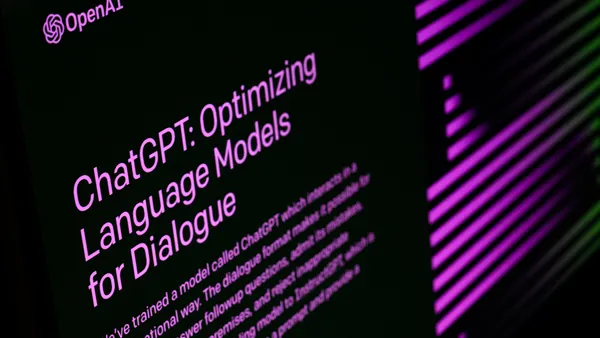Labor costs are on the rise, which makes having the right workforce management software an imperative. Learn how taking a modern approach to employee scheduling, operational processes, and risk management can reduce business costs.
Workforce costs are spiraling out of control, particularly for organizations that employ hourly and frontline workers. At the same time, many of these businesses are also grappling with increased operating expenses, supply chain disruptions, and labor shortages.
With business leaders expected to drive stronger results with fewer resources, reducing labor costs is critical. But how can companies cut expenditure without weakening performance and hurting the employee experience? The answer lies in a strategic approach to workforce management.
It's impossible to address rising labor costs without trustworthy, real-time data and insights. That's where the best workforce management software gives companies a competitive edge. As the modern workplace continues to evolve, that competitive edge will make the difference between success and failure. Read on to discover why a structured, intelligent approach to workforce management makes such a difference to the bottom line.
How Workforce Management Solutions Can Reduce Costs
Legacy workforce management platforms are unnecessarily complicated and can’t keep up with the speed of your business. Carrying out simple tasks often requires managers and employees to deal with outdated software solutions with cumbersome user interfaces. Worse, different tasks often require different tools, wasting employee time rather than saving it. Even simple processes, like leave management, can feel like mammoth undertakings.
With a modern workforce management system, you can address employees and managers’ needs in real time. In the next section, we'll highlight three key areas where a connected, holistic approach to workforce management helps reduce costs.
1. Addressing Spiraling Labor Costs
One of the highest fixed costs for any company is labor—and that's not changing any time soon. This 2023 study from S&P Global of 40 global economies found that the main driver of inflation was rising wage costs. The study highlights the service and manufacturing sectors, citing wage costs at three times the long run average. With minimum wage rates increasing and employees expecting more from employers, such as flexible working options and greater workplace transparency, businesses can't afford to react slowly.
Previously, legacy workforce management practices relied on manager intuition to reduce costs and increase productivity. Now, workforce management tools can automate operational processes, enabling the following benefits:
- Meet your managers where they work. By automatically delivering workforce insights to managers in their natural workflow, you reduce their administrative burden. That way managers can focus on what they do best—strategizing the next step forward and leading their team.
- Automate employee scheduling with artificial intelligence (AI). Workday Scheduling uses AI to automatically track employee schedules and adjust them to prevent coverage and skills gaps. In doing so you avoid either over- or under-staffing, massively reducing labor costs in the process. Not only that, but you also remove the possibility of unconscious bias and human errors in shift scheduling.
“[With Workday Scheduling] Our managers can create schedules a lot faster. And we can have the right people in the right place at the right time at each restaurant.”

Workday Rising Speaker, Donna Matteucci
Senior Director of Corporate Systems, P.F. Chang's
- Turn passive employees into active contributors. By providing your workers with self-service options like setting schedule preferences or accessing pay-on-demand from their mobile devices, you give them more control over their working life. That organic increase in employee engagement not only boosts productivity, but reduces the risk of attrition (and the associated costs).
2. Using Real-Time Data to Target Inefficiencies
Every part of workforce management, from monitoring working hours to absence management, relies on data. Rather than depending on old processes and struggling with data silos, businesses must assess the trustworthiness of their data. The quality of the data driving your processes will be a major factor in deciding your long term success. Not only that, but poor data naturally leads to increased costs because of the higher risk of errors.
Having data that’s untrustworthy and difficult to access challenges your teams every day. Since siloed data requires slow, manual processes to surface, workers can waste hours trying to get the information they need. Here's how a connected dataset can reduce inefficiencies and costs:
- Keep team members in the loop at every level. Transparency into decisions and data shouldn't be limited to smaller businesses. With a unified workforce management solution, everyone across the enterprise has eyes on data relevant to their role as part of their natural workflow. Additionally, you limit fatigue and frustration by ensuring employees and managers can find the data they need in one location.
- Make informed decisions with confidence. Resolving company-wide issues with disjointed datasets is nearly impossible. In years past, tracking inefficiencies across multiple departments and systems involved multiple manual processes and allowed for huge human error. Thanks to Workday's intelligent data core, leaders can strategize based on connected Human Resources, payroll, and workforce data they can trust.
- React quickly to market changes with automated assistance. The world of work is evolving faster than ever before—to survive (and thrive) businesses have to keep pace. Businesses that waste time on manual operations with lengthy approvals, such as everyday task management, will lose ground on competitors. With AI and ML embedded tools that analyze, anticipate, and automate tasks through features like time anomaly detection, and optimized shift scheduling, you reduce unnecessary labor costs and free up employees to take on more important work.
“We were able to bring machine learning, cutting edge technology to our field to help them do their jobs better and faster and easier.”

Workday Rising Speaker, Donna Matteucci
Senior Director of Corporate Systems, P.F. Chang's
3. Predicting Risk and Compliance Costs
As organizations strive to maintain their competitive edge, it's critical they don't overlook another major cost: risk and compliance. Rapid market-to-market changes mean compliance issues should be front-of-mind for global business leaders. But the reality is that, without assistance, no human can keep up with every potential risk factor. With legacy workforce management tools, guidance and safeguards are often incredibly limited, and are rarely updated.
The majority of compliance and risk costs stem from poor quality or missing data. With the right workforce management tool, you can ensure your data is as robust as it is easy to find. Here are three major areas where workforce management is key:
- Reduce stress and burnout risk in employees. Workforce management software relieves workers of the responsibility of staying up to date with changing labor agreements and data protection laws. In doing so, you further protect your company from potentially costly risks, as well as possible stress-induced attrition.
- Address local differences across a global team. Understanding the nuanced legal differences across countries and states requires an intelligent workforce management system. As scheduling and labor laws continue to evolve, it's critical that global enterprises have audit-quality data across the board.
- Enable proactive action, rather than reactive. The best way to deal with compliance issues is by addressing them before they become issues at all. The Workday system takes regulatory compliances into account when providing suggested actions, alerting managers about potential problems ahead of time.
“Now, having Workday, our leaders, whether that be operations leaders, retail leaders, get a full picture of what's happening with their population and they're learning so much from having that data at their fingertips."

Workday Rising Speaker, Melissa Lemery
Sr. Analyst, HR Technology, MillerKnoll
A Modern Workplace Requires Modern Workforce Management Software
The most significant issue businesses face right now isn't increasing wages or inflation—it's a lack of real-time insights and data visibility. Without unified systems to monitor worker time, scheduling, pay, and more, companies will struggle with growing market pressures. Today's labor cost issues won't be the same as tomorrow's, but the solution will remain the same: a workforce management tool.
With Workday, you can manage every aspect of work, from employee requests to employee satisfaction, in one platform. With modern features like AI embedded at the core, Workday identifies cost efficiencies faster, smarter, and with greater transparency. Then, by empowering workers, managers, and C-suite leaders to take action, you enable stronger savings across the business.
Learn more about how Workday can help your company succeed in the modern marketplace.










